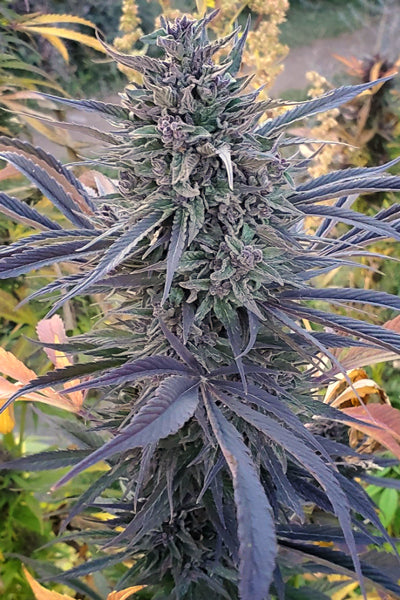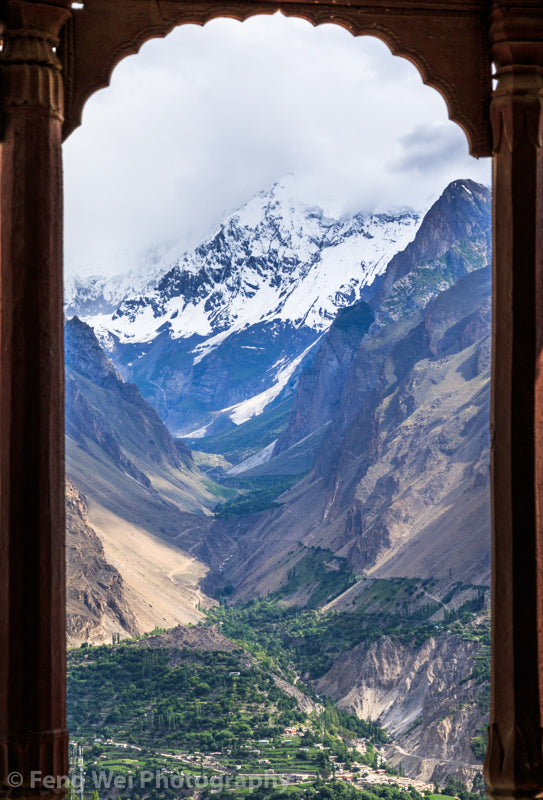
Hopar Valley '23 - Selection #4
Hopar Valley '23 - Selection #4
: Nedostupné
| Genetics | Hopar Valley, Pakistan |
| Type | indica |
| Cultivation |
indoor/outdoor/greenhouse |
| High | soothing, calming, sedative, body stone |
| Aroma | solvent, pine |
| Flowering time (indoor) | 8-9 weeks |
| Harvest time (outdoor) | early October |
| Yield | high |
| Plant height | medium-tall |
Description
Due to popular demand we have very limited stock of these rare heirloom seeds. This strain is available in our shop courtesy of Ace Seeds, the official reseller for the Indian Landrace Exchange. We would like to thank Ace Seeds for their kind collaboration.
Hopar Valley '23 cannabis seeds is a high yielding selection with intense purple colors from the Hopar Valley in Gilgit Baltistan, Pakistan. It features terpenes reminiscent of fresh pine paint thinner and mothballs. It has a short and closed structure with moderate lateral branching, completing its maturation in 8-9 weeks. The growing season spans from April/May to early October, when it is harvested to produce resin.
Hopar is a small but beautiful portion of the larger Nagar Khas region inside the Nagar Valley, featuring an average elevation of approximately 2500 meters at 36°N. Hopar Valley is an almost perfect bowl valley that is surrounded by towering snow clad mountains and constitutes the base of one of the most famous glaciers inside the central K2 National Park.
Cannabis cultivation in Hopar Valley has shrunk significantly in the past 3-4 decades from prolific to being only a secondary crop now sown on the periphery of the fields meant for growing food. Unlike some of the other cannabis hotspots in Northern Pakistan, like Chitral, which saw an increasingly uncompromising attitude, Hopar Valley, in the wake of rapidly increasing tourism, had an entirely different reason for slowing down the cultivation of cannabis. However, marijuana plants can still be easily seen growing on the sides of the roads in the entire valley.
The climate in the valley could be categorized as sub-arctic, with a cold and arid climate throughout the year. Rain is almost non-existent here, while the dry environment facilitates the withering of the bare rocky surfaces of the mountains into sand and silt deposited at its base. The snow cover spans over four months and the valley is surrounded by glaciers year-round.
The cannabis varieties, adapted to such extreme cold weather conditions, embody certain features over time, integral to the plant's survival and subsequent reproduction.
The central adaptations found in this valley are the production of the profuse anthocyanin on the flower bracts and the relatively bigger size of the trichomes with a more dense coverage.
Hopar Valley marijuana typically grows as a medium-tall plant with moderate side branching, broad leaflets, and fibrous stalk and stems. This is similar to cannabis varieties domesticated in subtropical highlands around 29-32°N (e.g., Malana, Uttarkhand, Nepal). Hopar Valley is located at a much higher latitude (36°N) and has fewer daylight hours and season length; hence the plants have broader leaflets to absorb sufficient sunlight on shorter days. The plants also flower faster to finish before the onset of the snowfall. The height is a maximum of 7-8 feet, with much of the population staying under 1.8 meters/6 feet.
Hopar Valley '23 can also easily grow indoors. Moderate to low levels of nutrients are best for the whole cycle, just slightly higher in NPK in the first 2/3 of the flowering period.
Many plants express vibrant colors, mostly on the floral bracts, while some also show anthocyanins production in leaves and the bracts alike. There seems to be a good proportion of plants expressing reddish-purple coloration on the bracts with contrasting green leaves within the larger domesticated population of Hopar Valley.
The undomesticated cannabis population in the Hopar Valley is distinctly different from the fully domesticated ones. Plants from the undomesticated populations clearly show lesser vigor, with spindly stems instead of thick upright stalks, as seen in domestic populations. However, traits integral to the organism's survival in this harsh environment could be seen in both populations, such as bigger-sized trichomes. It's also noteworthy that the smell found in these plants was much more intense than possibly any other known landrace variety encountered. The sheer density of the resin glands on the flowers was outstanding in the majority of cases. The bigger size of those glands only seems to further aid in producing and storing higher volumes of (secondary metabolites) cannabinoids and terpenes.
Germination info: ILE seeds must be planted directly in soil. A heating mat is beneficial during cooler months. The average germination time is 5-12 days. Do NOT throw away your soil if the seedlings don't appear after a few days!
ILE will not accept any reclamation regarding germination issues if a customer does not follow this germination method.
Top Features
- rare Indica landrace
- hash strain
- high cold resistance
- high heat resistance
- high drought resistance
Medical Info
- anxiety
- stress
- sleep disorders
- muscle relaxant
- pain relief
- broad spectrum use





